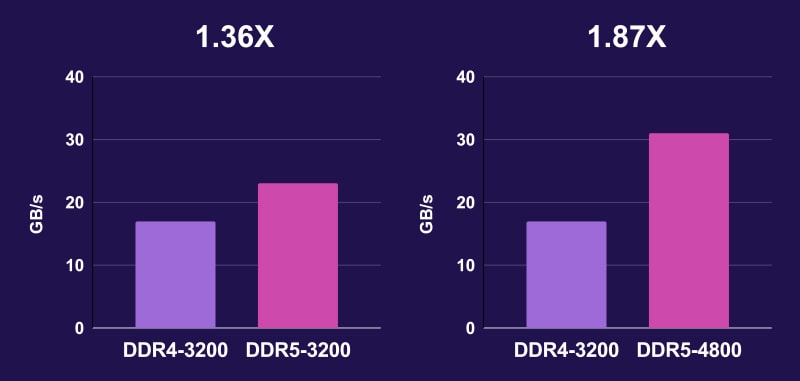

Generally, the higher the frequency, the higher the CAS latency, and as such, real-world performance gains are often slim, unless the rise of that CAS latency is slowed as well. This is where overclocking memory typically comes unstuck. This tells us approximately the total time it takes for that memory module to access, store, or request a bit of data from a location on the module. So, as an example, if we take a 2,666MT/s memory kit, operating with a CAS latency of 15, we get a real-world result of 11.25ns.

So, how do we get a figure that makes any sort of logical sense to us consumers? Well, there’s a handy formula that converts CAS latency and MT/s into a real-world latency: Latency = (2,000/Y) x Z, where Y is your RAM’s speed in MT/s, and Z is your CAS latency. It’s only when you combine it with the memory transfer rate we mentioned above that you get a better picture of just how fast your memory modules are. That said, this figure on its own doesn’t give you all the information you need. Technically speaking, modern-day memory quoted at 2,400MHz, for instance, only operates at half that frequency. However, marketing apparently didn’t get that memo, because many companies, in a bid to tout it as the next big thing, ignored the MT/s figure, instead referring to it as MHz. The figure for accurate measurement of data transfer requests then shifted from MHz to MT/s to adjust for this change, despite the fact that memory still operated at the same frequency. Instead of only actuating once on the rising of each clock cycle, it could now also process an additional operation on the fall of that same clock cycle, effectively doubling the rate at which the DIMM could process data. The problem is, when DDR (or double data rate) RAM came on the scene, it changed how data transfers were registered.

A speed of 1Hz, for example, is one cycle per second 2Hz is two per second a MHz is 1,000,000 cycles per second you get the picture.

Like the ticking of a clock, each tick represents a single hertz or cycle (the opening and closing of a transistor gate, in this case). In short, every single solid-state component in your machine operates at a specific frequency, or Hz-whether it’s your processor, GPU, memory, or even SSD, each one operates on a cycle. Way back when, in the early days of SDRAM development, the megahertz measurement was the correct way of advertising the associated speeds of memory. Memory speed is one of the most convoluted specifications around, and is often misrepresented. For more reading on how memory works, check out our What is RAM primer.


 0 kommentar(er)
0 kommentar(er)
